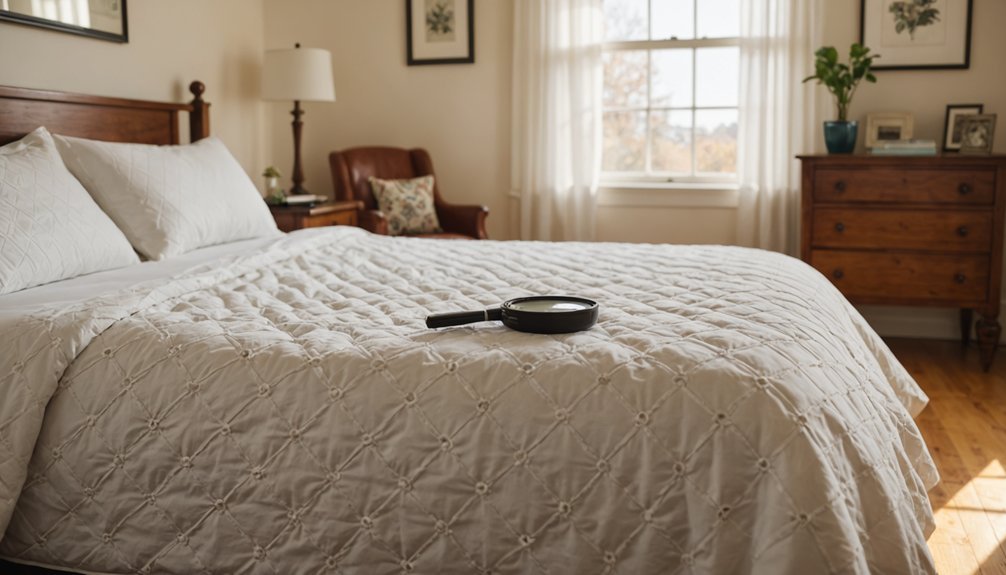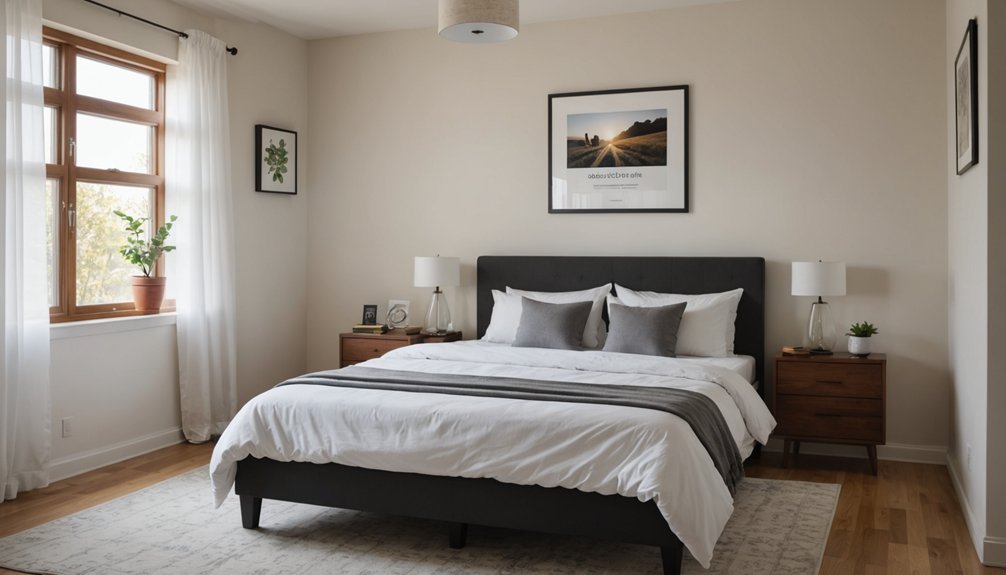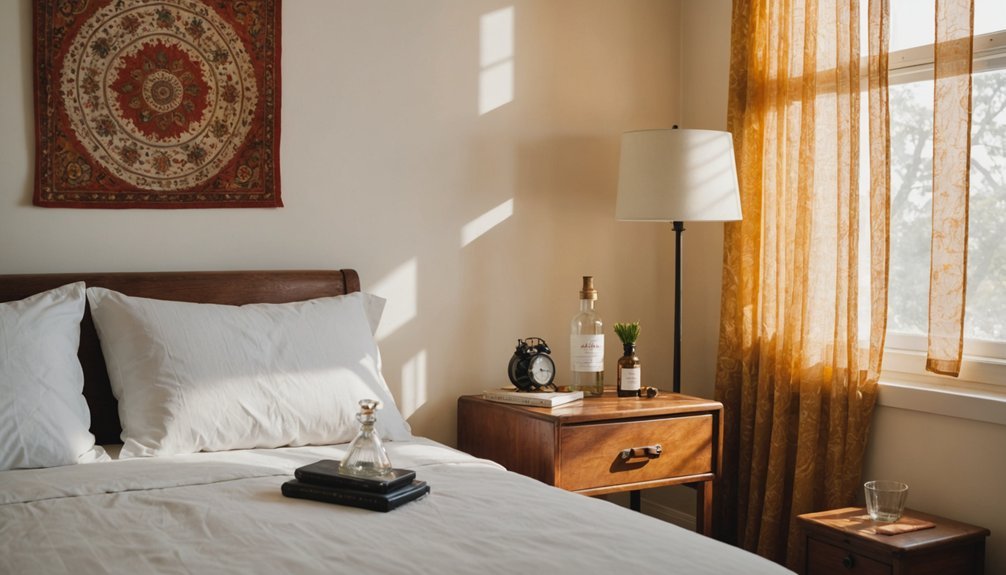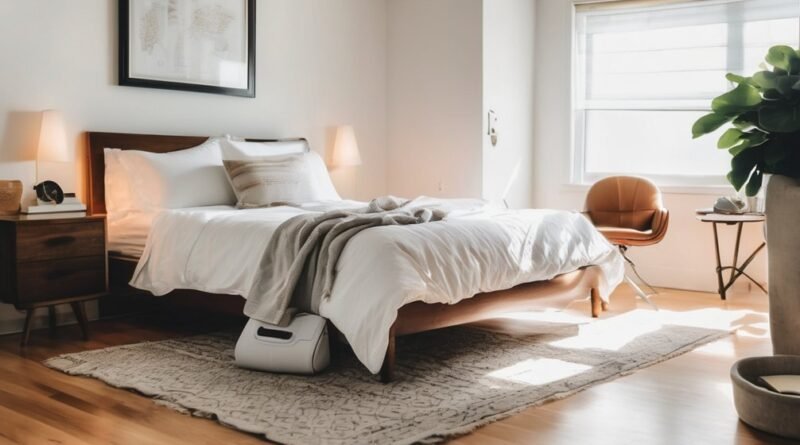Airbnb and Bed Bugs: Prevention for Guests & Hosts
When you’re steering through the world of short-term rentals, bed bugs aren’t just a minor inconvenience – they’re a potential nightmare that can follow you home. Whether you’re a property host or weekend traveler, you’ll need more than basic cleaning to prevent these resilient pests. As bed bug incidents continue rising in Airbnb properties worldwide, understanding your role in prevention could mean the difference between a successful stay and a costly infestation.
Key Takeaways
- Hosts must conduct regular professional inspections and install protective barriers like mattress encasements to prevent bed bug infestations.
- Guests should pack using hard-shell suitcases and keep belongings in sealed plastic bags, avoiding direct contact with beds or floors.
- Document all prevention measures, inspections, and treatments, maintaining clear communication between hosts and guests about potential issues.
- Install bed bug interceptors under furniture legs and conduct thorough cleaning of cracks and crevices after each guest stay.
- Upon discovering bed bugs, immediately photograph evidence, isolate belongings, and report the issue through Airbnb’s official channels.
Understanding the Bed Bug Crisis in Short-Term Rentals

While bed bugs have long plagued the hospitality industry, their impact on short-term rentals has reached alarming levels across the United States.
You’ll find these persistent pests in every state, with urban areas experiencing triple the infestation rates of rural locations due to higher population density and increased mobility.
The statistics are sobering: 89% of pest professionals report bed bug treatments in apartments and condos, while 70% tackle infestations in hotels. Short-term rental properties face average remediation costs of $1,750 to $5,000 per infestation.
What’s more concerning is that these sneaky insects can survive without feeding for over a year, making them incredibly difficult to eliminate.
With only 29% of Americans able to identify bed bugs correctly and just 28% checking their accommodations before staying, you’re facing a significant risk when booking short-term rentals without proper precautions.
Host Responsibilities and Legal Obligations

The rise in bed bug incidents has placed increasing pressure on Airbnb hosts to understand and fulfill their responsibilities. As a host, you’re legally obligated to maintain a pest-free environment and promptly address any bed bug issues.
You must conduct regular inspections, communicate immediately with guests and Airbnb if problems arise, and engage professional pest control services when needed. Documentation of treatments must be maintained for all pest control efforts undertaken on the property.
You’ll face significant liability if you knowingly rent out infested properties without disclosure. To protect yourself, maintain detailed records of pest control treatments and implement routine prevention measures.
You’re also required to provide clear cleaning protocols to your property management staff. Consider obtaining specific bed bug insurance coverage, as treatments can be costly, and you’ll be primarily responsible for expenses unless negligence can be proven on Airbnb’s part.
Essential Prevention Strategies for Property Owners

To protect your Airbnb property from bed bugs, you’ll need to schedule routine professional inspections that can spot early warning signs before they become full-blown infestations.
Regular cleaning after guests and thorough attention to cracks and crevices will help maintain a bed bug-free environment.
You should install protective barriers like mattress encasements and bed bug interceptors under furniture legs to create defense zones throughout your rental space.
Make sure you’re documenting all prevention measures, including inspection dates, barrier installations, and pest control treatments, to demonstrate your due diligence and support potential insurance claims.
Regular Professional Inspections
Maintaining regular professional inspections stands as a cornerstone of effective bed bug prevention for Airbnb properties.
You’ll need to schedule certified pest control experts at least quarterly, or more frequently if you’ve had previous infestations. These professionals can spot hidden colonies that untrained eyes might miss.
Your inspector will thoroughly examine mattresses, box springs, headboards, and furniture seams where bed bugs commonly hide. They’ll also check cracks, baseboards, and electrical outlet covers. Some may even use specially trained dogs for enhanced detection through scent identification.
To maximize inspection effectiveness, guarantee your cleaning staff is properly trained to spot early warning signs during routine turnovers. Consider using high-quality bed encasements to make inspections easier and more effective.
They should follow detailed SOPs and maintain consistent documentation, becoming your first line of defense against potential infestations.
Protective Barrier Installation
While protecting your Airbnb property from bed bugs requires multiple strategies, installing effective protective barriers serves as your primary defense against infestations.
Start by encasing all mattresses with high-quality, bed bug-proof covers featuring sealed zippers. Before installation, thoroughly inspect and vacuum the mattress and bed frame to eliminate potential eggs and debris. Position beds at least 30cm from walls and install bed bug interceptors under all furniture legs.
Create a protective perimeter by applying Diatomaceous Earth around bed bases and treating bed frames with steam.
Don’t forget to prevent bedding from touching the floor and maintain clean, dry sleeping areas.
You’ll need to regularly inspect these barriers, reapplying DE as needed and checking mattress covers for tears or damage.
For maximum protection, supplement these measures with allergen-resistant covers and maintain a clutter-free environment throughout your rental property.
Document Prevention Measures
Successful bed bug prevention in your Airbnb property depends on thorough documentation of all preventive measures. Keep detailed logs of every inspection, cleaning schedule, and pest control treatment you implement.
Create a standardized checklist for your cleaning staff to record their findings during turnover inspections, focusing on mattress seams, bed frames, and other common hiding spots.
Document any guest complaints or suspected bed bug sightings immediately, along with the actions taken to address them. Maintain records of staff training sessions and update your prevention protocols based on inspection findings.
You’ll want to track the effectiveness of your preventive strategies by monitoring trends and adjusting your approach accordingly. This systematic documentation helps guarantee accountability and provides valuable data for improving your property’s bed bug prevention program.
Smart Travel Tips for Airbnb Guests
You’ll greatly reduce your bed bug exposure risk by researching property reviews and host responsiveness before booking your Airbnb stay.
Pack protective items like bed bug-proof mattress covers and keep your luggage elevated on hard surfaces or racks throughout your visit.
When departing, carefully inspect your belongings and follow proper decontamination procedures, including high-heat washing of all clothing and thorough luggage cleaning.
Pre-Stay Prevention Steps
Taking proactive steps before your Airbnb stay can greatly reduce your risk of encountering bed bugs.
Start by thoroughly reviewing guest feedback that mentions cleanliness and reach out to your host about their bed bug prevention measures and inspection protocols. Look for listings that detail professional cleaning services and regular pest inspections.
Pack strategically by using sealable plastic bags for your clothes and consider bringing portable inspection tools like a flashlight and magnifying glass.
If possible, include mattress encasements in your luggage for extra protection.
Don’t forget to plan your luggage placement strategy in advance – you’ll want to avoid putting bags on beds or upholstered furniture. Instead, identify hard surfaces or bathrooms where you can safely store your belongings upon arrival.
Pack Smart, Stay Safe
Smart packing strategies serve as your first line of defense against bed bugs during Airbnb stays. Use hard-shell suitcases with tight seals and store them on elevated surfaces away from beds and upholstered furniture.
Keep your belongings in sealed plastic bags within your luggage, and never place bags directly on floors or beds. When unpacking, maintain organization by isolating clean and worn clothing in separate sealed containers.
- Pack clothes in multiple sealed plastic or vacuum bags to prevent cross-contamination
- Store luggage on bathroom counters or luggage racks rather than carpeted areas
- Keep suitcases zipped closed when not actively accessing them
- Bring a portable bed bug spray and mattress encasements for added protection
- Consider travel-sized steamers or hot dryers for treating clothes during your stay
What to Do If You Discover Bed Bugs
When bed bugs are discovered in an Airbnb rental, immediate action becomes essential to protect yourself and prevent further spread.
First, document the evidence by taking clear photos or videos of any bed bugs, bites, or signs of infestation. Don’t place your belongings on beds, floors, or furniture to avoid contamination.
Protect yourself first – document bed bug evidence with photos and keep your belongings away from potentially infested surfaces.
Contact your host immediately through Airbnb’s messaging platform and report the issue to Airbnb Support. If your host isn’t responsive, request alternative accommodation or a refund.
Isolate potentially infested items in sealed plastic bags until they can be properly treated. When you return home, wash all clothing and fabrics in hot water and dry on high heat.
Inspect your luggage thoroughly and consider professional treatment if necessary. Keep all documentation and correspondence in case you need to pursue further action through Airbnb’s Resolution Center.
The Rising Challenge of Bed Bug Resistance and Spread
Despite increased efforts to control bed bug populations, these resilient pests continue to spread at an alarming rate across major cities worldwide.
With predictions showing a 67% increase in infestations by 2025, you’re facing a growing threat that’s particularly challenging in urban areas.
These pests have developed strong resistance to conventional pesticides, making traditional treatments less effective and infestations more persistent.
- Infestations are three times more common in densely populated urban areas than rural settings
- Hotels and motels account for 68% of bed bug cases, with high guest turnover increasing spread
- Your risk increases considerably when traveling to hotspot cities like New York, Chicago, and Atlanta
- Bed bugs can easily hitchhike on luggage and clothing between locations
- Traditional pesticides are becoming less effective, requiring integrated pest management approaches
Conclusion
You’ll need to stay vigilant about bed bugs whether you’re hosting or traveling through Airbnb. Don’t wait for an infestation to take action – implement prevention strategies now. Remember, it’s far easier to prevent bed bugs than eliminate them. By working together, hosts and guests can protect themselves and maintain the trust that makes short-term rentals successful.

